What is that felted wool headgear once worn in most countries of the Muslim world? Chechia, fez or tarbouch, its name, shape and color vary from country to country.
 Fez or tarbouchs at the top,
Fez or tarbouchs at the top,
chechias at the bottom © ChwayaOrigins and differences between chechia, fez and tarbouch
Its origin is uncertain. Some say it came from Kairouan in Tunisia, others from the city of Shesh (now Tashkent) in Uzbekistan and others from Andalusia. The Turkish fez, meanwhile, would come from Greece. But is there not a common origin?
In Tunisia, the headgear that has become a national symbol is the chechia. It is vermilion red, simple and low, smaller than the Turkish fez or the Syrian and Lebanese tarbouch which goes up and which is decorated with a black tassel. The chechia also exists in other countries such as Libya where it is dyed black.
Today that headgear is on the way out. After its ban by Ataturk in Turkey, its abandonment by Nasser in Egypt, and globalization which means that current generations no longer dress in the traditional way, it is hardly worn on a daily basis. A few elderly people still wear the chechia, but this is becoming increasingly rare.
The chaouachis of Tunis: last makers
There are therefore hardly any makers of artisanal fezs in the Muslim world, except in Tunis where a handful of irresistible makers still exist. They are called chaouachis, a profession exercised by the notables of the medina of Tunis in the souk of chechias (souk el chaouachine).
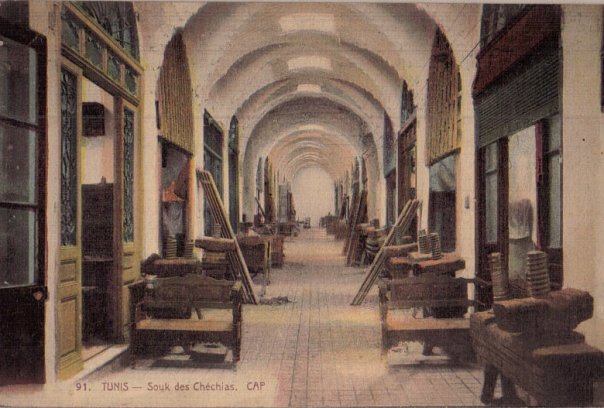
Photograph of the chachia souk of Tunis at the beginning of the 20th century.
This profession flourished for centuries and the chaouachis belonged to the high social category of Tunis. In 1947, the city of Tunis had 480 chaouachis. Today, only a handful of manufacturers survive. They export 90% of their production to the entire Muslim world and particularly to Libya, African countries and Turkey.
While demand has fallen sharply, the job of chaouachi has not changed and still demands the same requirements. It is a very organized profession and regulated by law. To become a chaouachi master, it is imperative to have been an apprentice for years and then to have the approval of his master as well as the certificate of the chef of the souk el chaouachine. It's a job that requires a lot of know-how and years of experience.
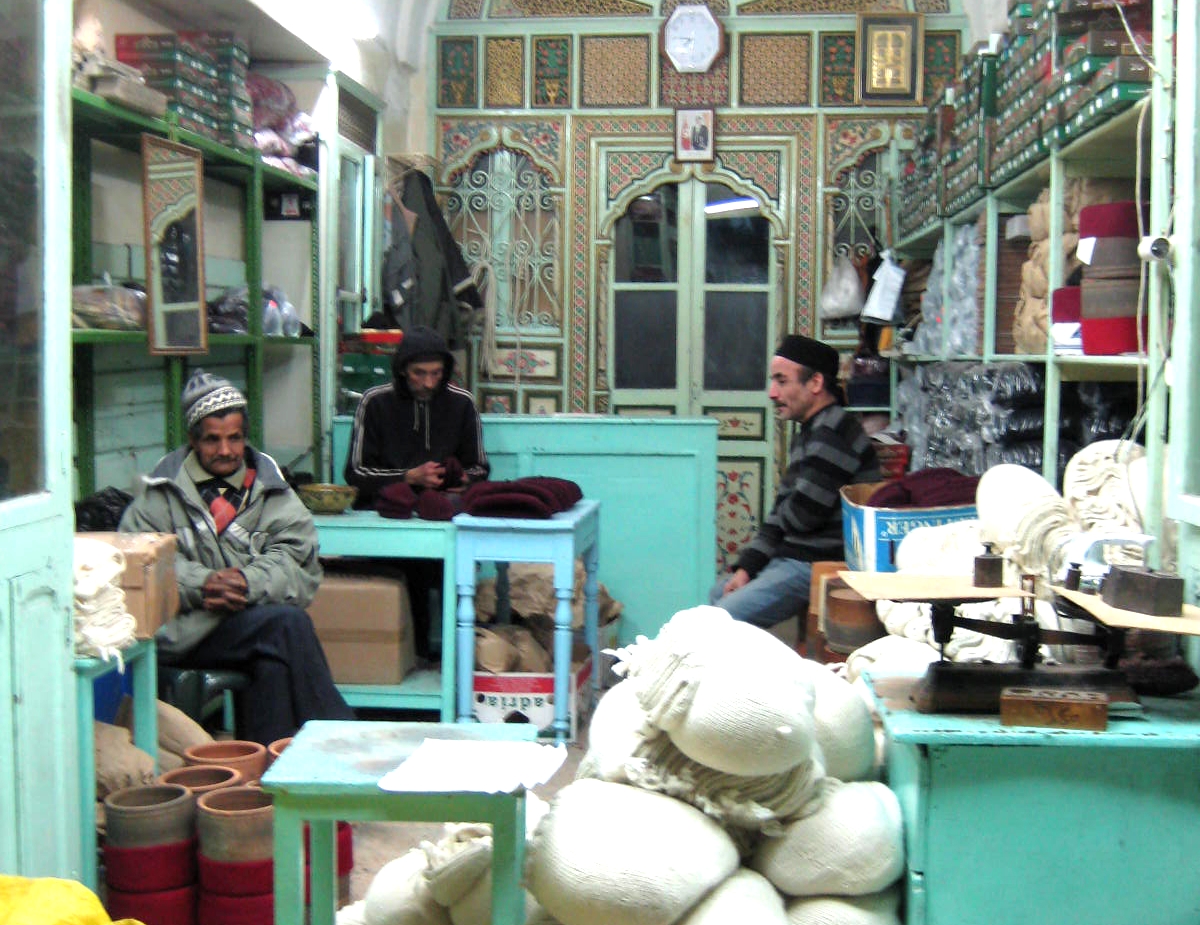
Workshop of a chaouachi in the medina of Tunis - © Chwaya
The making stages
To reach its final state, the chechia follows a long circuit. First of all, women from the south of Tunisia knit very large caps of white wool with wide stitches at home. The hats are then passed from house to house: some women specialize in holes, others in knots and others in embroidery of the "brand" of chaouachi. The chaouachi then assembles the cups two by two, one inside the other and ties them together, then sends them to the Al Battan factory 30 km from Tunis. There is only one factory for all chaouachis. If it were to close, it would mean the disappearance of the traditional headgear. In this factory, large caps of white wool are soaked and massaged in large vats of hot soapy water. This step makes the cups shrink and the stitches disappear.
The caps are then sent dry and hard to the chaouachi which takes care of the carding which will give them a felted appearance. Next comes the dyeing step, followed by shaping around clay cylinders that vary in size depending on whether you want to make a fez or a fez / tarbouch. The color also varies. Fezs destined for Libya and African countries are dyed black.
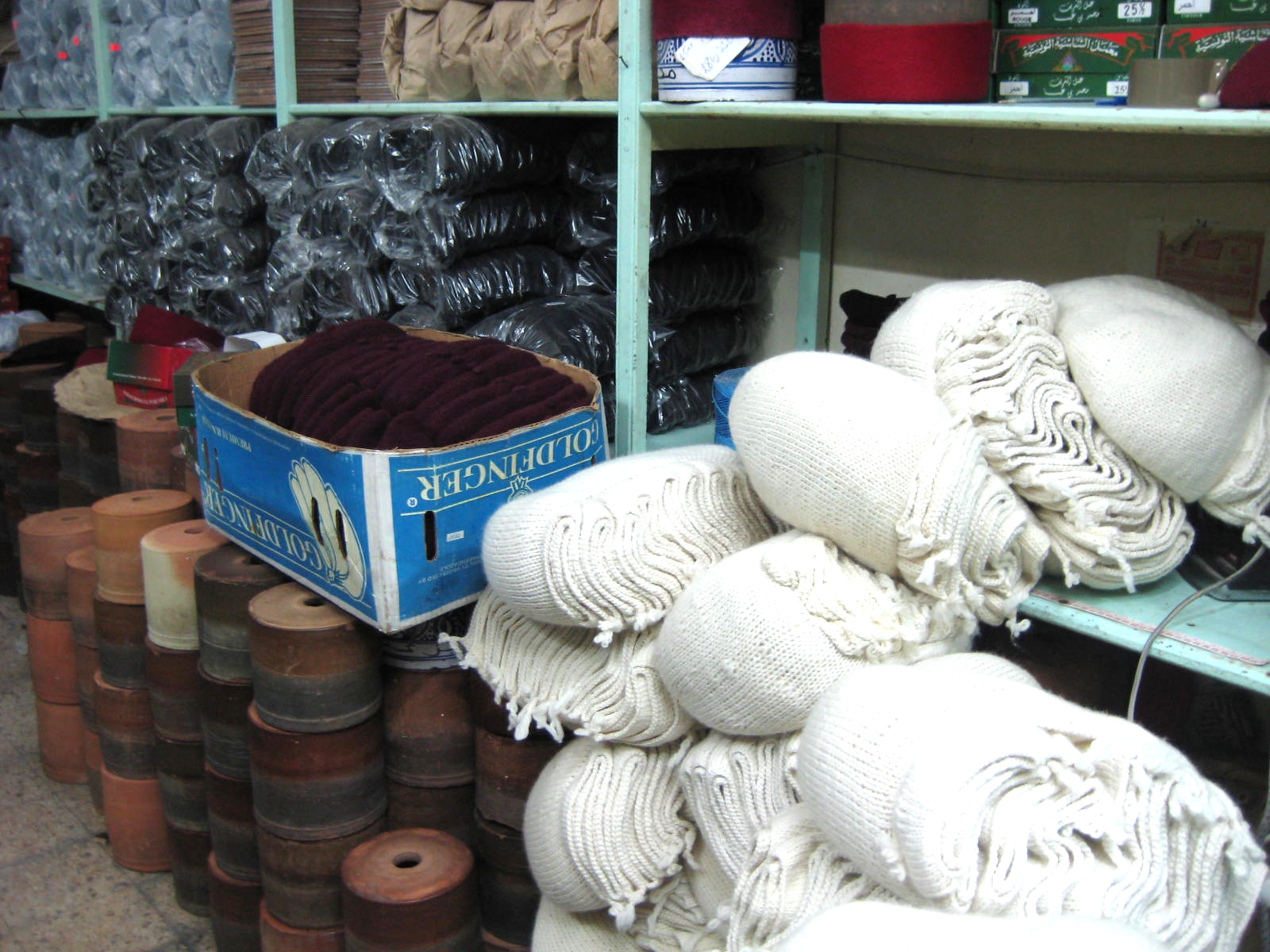
On the right, the chechias in the initial state: large knitted caps in white wool. On the left, the clay cylinders used to mold the chechia - © Chwaya
Today, the chechia is an artisanal product in great demand among tourists in Tunisia. However, fake industrial chechias at a lower price qualified as "carpets" by the chaouachis, invade the market. At this rate, how long can the chaouachi profession continue?
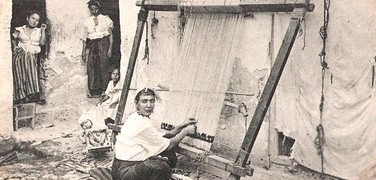 The loom: humanity's first machineRead more
The loom: humanity's first machineRead more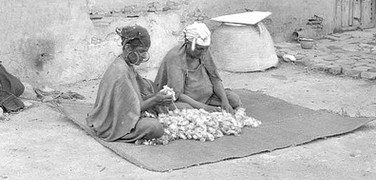 Preparing the wool13/11/2021Posted in: HandicraftRead more
Preparing the wool13/11/2021Posted in: HandicraftRead more Floral waters / hydrolats in Tunisia: distillation and virtues29/01/2021Posted in: HandicraftRead more
Floral waters / hydrolats in Tunisia: distillation and virtues29/01/2021Posted in: HandicraftRead more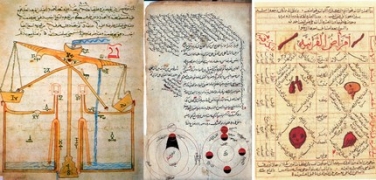 Arabic words in the French language13/01/2021Posted in: CultureRead more
Arabic words in the French language13/01/2021Posted in: CultureRead more Reviving the Tunisian carpet craftswomanship14/12/2020Posted in: HandicraftRead more
Reviving the Tunisian carpet craftswomanship14/12/2020Posted in: HandicraftRead more
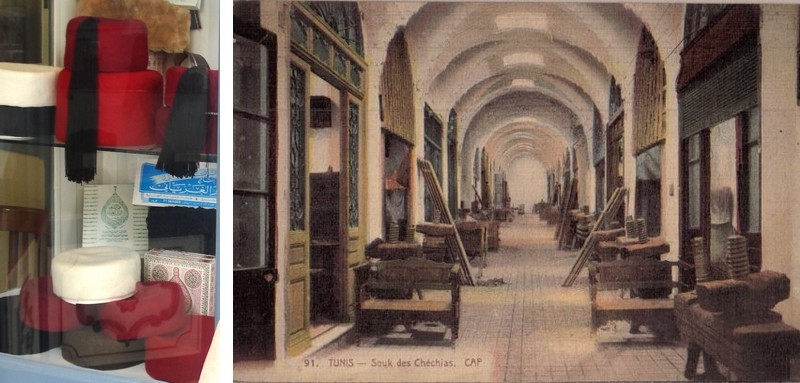







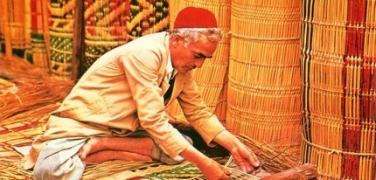
Leave a comment
Comments
Dalmas
By: Dalmas On 24/02/2020Bonjour
Il y a une quinzaine d’années, j’étais modiste a paris et j’ai réalisé un projet avec un atelier de chéchias du souk de Tunis.
J’aimerais beaucoup reprendre contact avec eux mais je ne trouve plus les coordonnées.
Savez vous où je pourrais trouver les adresses des vingt ateliers de chéchias existant encore ?
Merci !
Cordialement
Marie-Clémence
ragnar
By: Ragnar On 31/08/2019L'artisanat local doit survivre , il faut soutenir cette économie
zia
By: Zia On 13/10/2018Très bon article bonne d’hab
Merci pour vos articles.
natasha r
By: Natasha r On 11/09/2017C'est toujours la même chose : avec l'arrivée du tourisme on ne retrouve que des produits contrefaits... Quel dommage quand on voit la beauté des originaux !
Eric
By: Eric On 20/12/2016"A ce rythme, combien de temps le métier de chaouachi pourra-t-il encore perdurer ?"
Voilà une question qui remet en question l'artisanat local et toutes les choses merveilleuses que cela peut apporter !
Dany
By: Dany On 28/10/2016Collectionneur de Fez depuis 9 ans, je suis vraiment attaché à cet artisanat local qui met en valeur de vieilles traditions.
Noe
By: Noe On 29/11/2015Bonjour;
Soutenir l'artisanat local en important ce type de produits fait mains en France est vraiment une très bonne chose.
Ces tapis et autres produits sont vraiment magnifiques en plus !
Je fais de même pour des produits de l'artisanat islandais, qui sont totalement différents car liés à un pays froid, donc des pull, ou des bonnets au lieu des chéchias, fez et tarbouchs!
Bonne continuation à vous!
Pas de Tapis ni de
Soph
By: Soph On 08/10/2015Merci pour l’article. Il faudrait que les jeunes relancent cette mode. C’est très beau un jeune homme en chéchia.